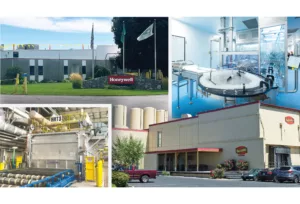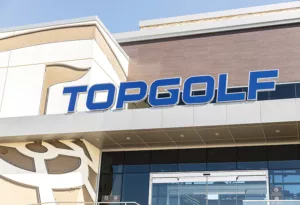Aerostar Aircraft takes long, slow journey to make fast jet
Hayden concern seeks $50 million for domestic manufacturing of aircraft

Three decades after the last new Aerostar airplane was manufactured, the current owners of Aerostar Aircraft Corp. still are working to carry out the vision of the plane’s designer—to produce with the same basic airframe small jets for business and personal use.
Hayden-based Aerostar owners Stephen Speer and Jim Christy have outfitted an Aerostar aircraft with Pratt & Whitney jet engines and are looking for investors to bring the aircraft back into production as a jet.
They say a conservative estimate of U.S. demand for the two-turbine Aerostar jet, which would be classified as a very light jet, would be 30 to 50 aircraft a year, supporting 500 manufacturing jobs.
The conventional dual-prop Aerostar, developed in the 1960s by accomplished general-aviation aircraft designer Ted Smith, has long been the highest-performing aircraft in its class in terms of speed and efficiency, Speer and Christy claim.
“It really is designed for high speed,” says Christy, Aerostar’s vice president.
The round-the-world speed record for piston engine aircraft, set in 1977 by pilots flying an Aerostar plane, still stands at just over 104 hours at an average speed of 220 mph, says Christy.
Two years earlier, an Aerostar plane set a 2,000-kilometer speed record for piston-powered land planes, averaging 273 mph.
With the latest advances in Lycoming piston engines and high-performance technology, the Aerostar’s maximum level speed today is around 325 mph.
Smith, however, designed the sleek six seater to go much faster. He envisioned the Aerostar with jet engines, even though turbines hadn’t been developed that were small enough for the plane.
Smith died in 1976, and the company changed hands a few times, shelving the jet program.
Altogether, Aerostar produced 1,100 of the twin-engine aircraft between 1967 and 1984, and about 700 Aerostar planes remain in service.
Speer and Christy bought the company in 1991 and moved it to Spokane from California. The company moved to the Coeur d’Alene Airport, in Hayden, in 1998.
Today the company services and updates Aerostar air-craft, improving engine power, aerodynamics, and reliability systems.
Aerostar recently developed a blended winglet, a wingtip attachment that curves upward, increasing fuel efficiency by reducing drag.
The company currently occupies a total of 40,500 square feet of hangar, manufacturing, and office space in a three-building complex at 10555 Airport Drive, at the airport’s Pappy Boyington Field.
Aerostar shares that space with two other companies Christy and Speer own: Machen Inc., which makes high performance parts for Aerostar aircraft, and American Aviation Inc., which manufactures high-performance parts for other makes of aircraft, including Cessna and Piper Cheyenne planes.
“We make airplanes go faster,” Christy says.
The three companies combined have 17 employees, down from 40 before the recession.
Speer, Aerostar’s president, says the company has openings, though, for two experienced aircraft mechanics with Federal Aviation Administration ratings in airframes and power plants.
“The recession hit aviation particularly hard, as business travel by private aircraft was politically frowned on,” he says. “Half the people in Wichita (Kansas) who were working on airplanes were out of work.”
The Wichita Metro Chamber of Commerce boasts that nearly 40 percent of global general aviation aircraft are produced there.
Speer says he expects annual revenue for Aerostar, Machen and American Aviation will tick upwards this year for the first time since the recession. “It’s still not where it was five years ago,” he says.
The recession didn’t halt plans for the Aerostar jet, which Speer and Christy revived in 2005, when Pratt & Whitney certified a jet engine for Cessna Aircraft Co., another small plane manufacturer. Speer began designing modifications to the Aerostar around the new turbine.
Speer adds that the jet program “is moving at the speed of cash,” which is to say slowly.
Aerostar’s one and only prototype jet aircraft first flew with the Pratt & Whitney engines in 2010 with little fanfare outside of the aviation community, despite its maximum level speed of more than 460 mph.
Christy and Speer, though, are looking actively for investors to put the Aerostar jet into eventual production.
They estimate it will cost about $5 million to complete FAA certification for integrating the jet engines in the Aerostar design, and another $50 million to $60 million to begin production of new Aerostar jets.
Potential U.S. investors are wary of starting up new airplane manufacturing operations in this country, and most investor interest is coming from overseas, they say.
“It’s difficult to get people interested investing in aviation manufacturing in this country,” Speer says. “It’s capital intensive.”
Several Chinese companies are taking a look at Aerostar, he says.
“They want to be able to manufacture in China because they need high-tech jobs,” Speer says.
Christy says China is buying aerospace companies, not because business is good, but because their market is growing and they can buy technology a lot faster and cheaper than they can develop it independently.
Companies owned and operated by the government of China have bought a number of U.S. aviation companies in recent years, including Kerrville, Texas-based Mooney Aviation, and Duluth, Minn.-based Cirrus Aircraft Corp., both manufacturers of single-engine aircraft. China also owns Continental Motors Inc., a Mobile, Ala.-based company that manufactures engines used by several U.S. aircraft makers.
Christy and Speer are reluctant to sell Aerostar outright. They currently own the design-type certificate for the aircraft, meaning they have exclusive rights to manufacture the Aerostar, which includes the design, drawings, intellectual property, and proprietary tooling and equipment.
“We’re talking about licensing,” Speer says.
While it’s still in the “very early discussion” stage, one licensing possibility would include a dual-manufacturing agreement in which Aerostar would manufacture aircraft for the U.S. and Europe, and China would manufacture planes for Asian markets, he says.
The certification alone would enable the company to begin retrofitting existing Aerostar planes with jet engines.
“We wouldn’t need another $50 million for that,” Speer says.
The total jet engine and technology upgrade would cost around $1.7 million for Aerostar aircraft.
Because turbines have fewer moving parts than piston engines, the operational cost of an Aerostar jet likely would be lower than the operational cost for an Aerostar with conventional engines, he says.
Speer estimates the list price of a completely new, domestically produced Aerostar jet would be $2.5 million.
The next closest competitor price is $3 million for a smaller jet, he says. Most jets in the class range Aerostar is aiming for cost $4 million to $5 million, he says.
While the company has incorporated several upgrades in propulsion systems and other technologies, the basic design of the Aerostar airframe hasn’t changed significantly.
The airframe for the prototype jet, for example, was built in 1977.
“It was a good design to start with, and there’s still nothing faster in its class,” Speer says.
Christy adds, “If you have a car that was built in 1977, it would look old. The Aerostar doesn’t look old. It was designed as a jet. It looks fast, and it is.”
Related Articles
Related Products


_c.webp?t=1763626051)

_web.webp?t=1764835652)
